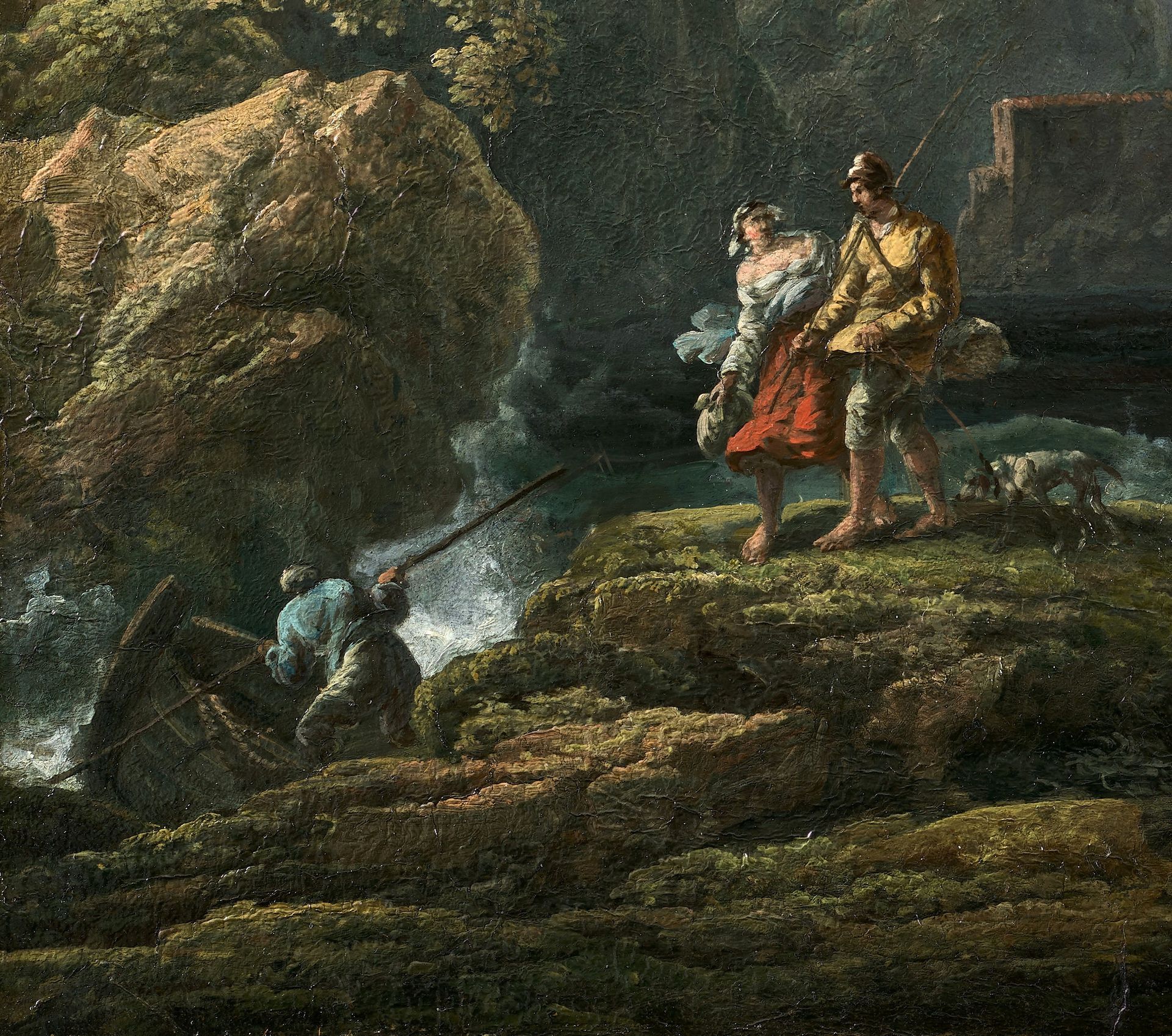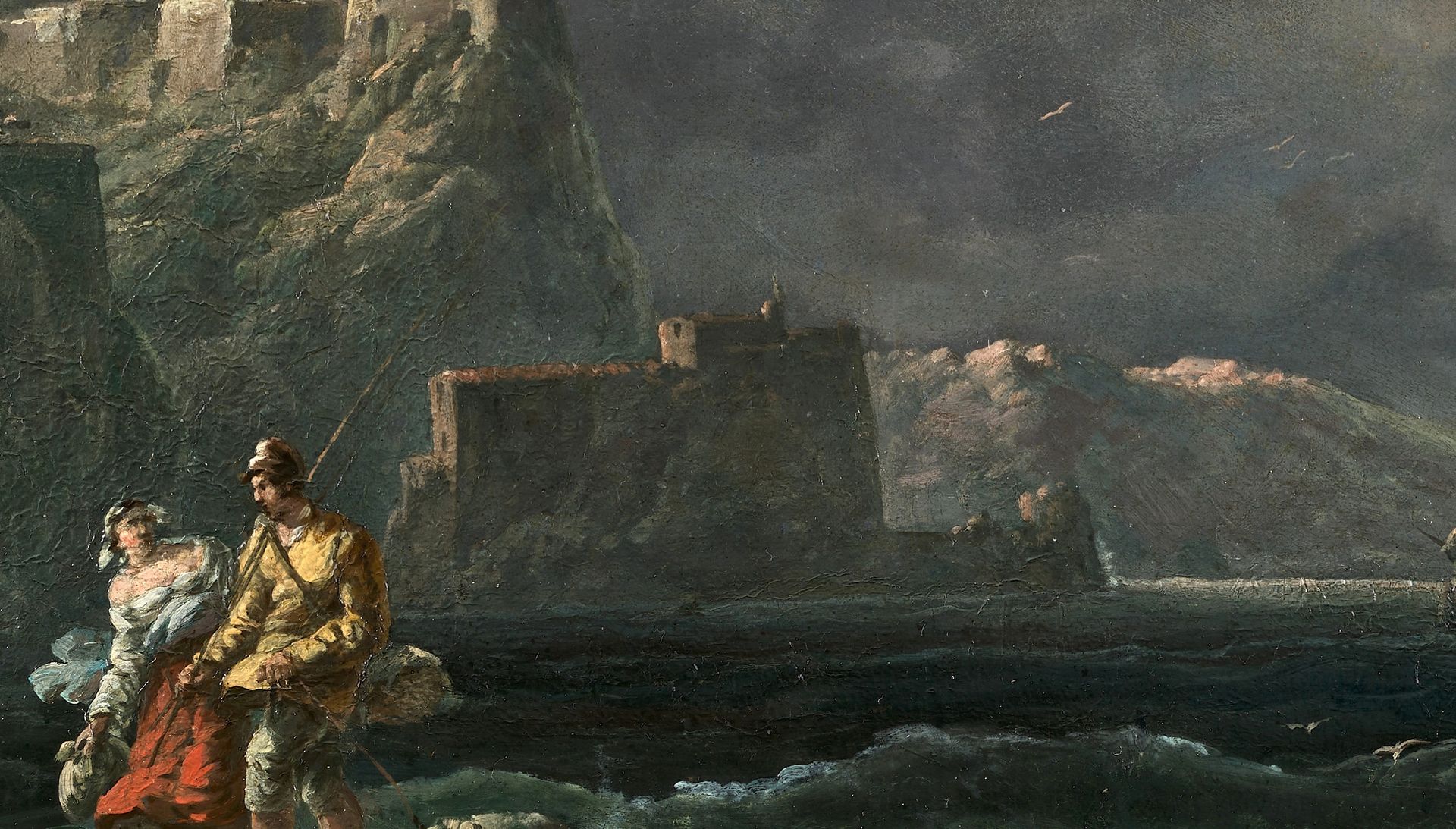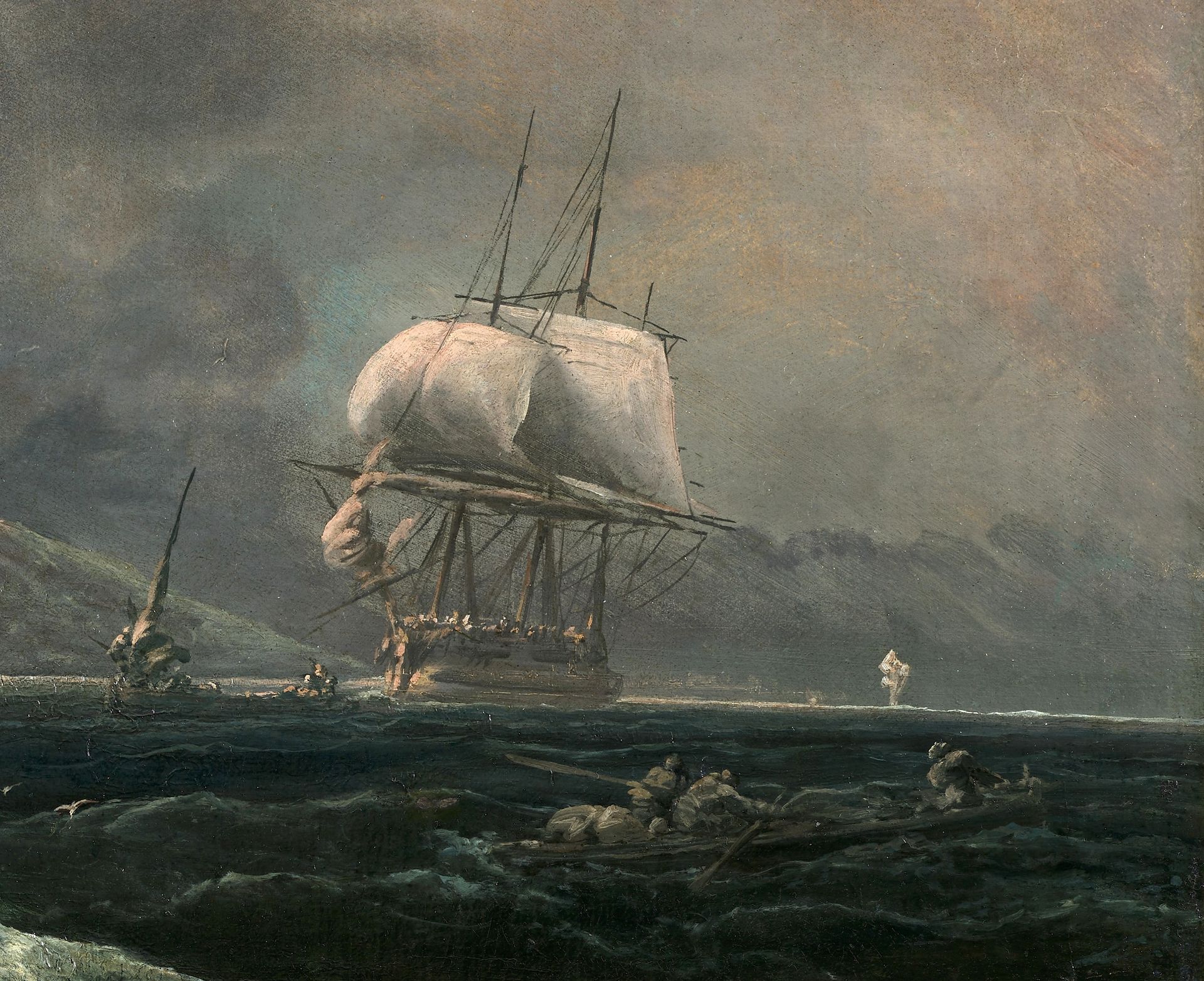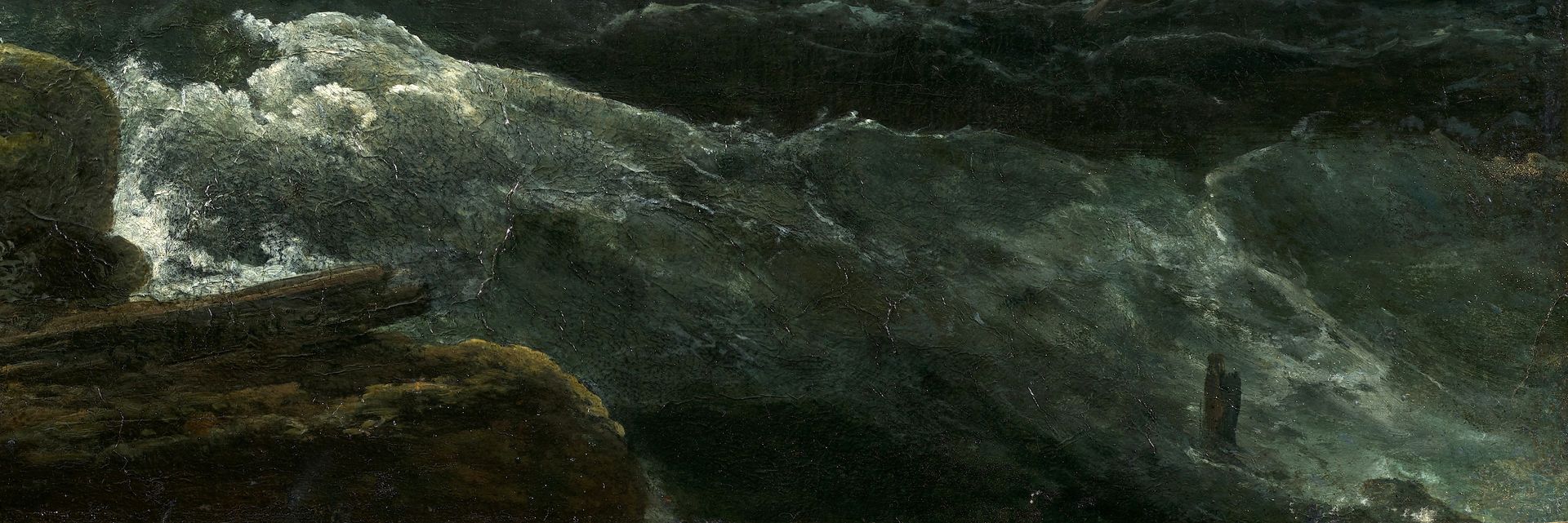
Carlo BONAVIA (active in Napoli circa 1751 – 1788)
Vessel in rough seas off a rocky coast dominated by a fort
Signed in the center: “C. .ONA.IA”
Oil on paper laid down on canvas, 52 x 73,5 cm
PROVENANCE
- Private Collection until February 2025
THE ARTIST
Although part of the Neapolitan vedute tradition, popularized by Salvator Rosa in the 17th century and developed by artists such as Leonardo Coccorante, Pietro Fabris, Gabriele Ricciardelli and Pietro Antoniani in the following century, Bonavia was especially influenced by the French view painter Claude-Joseph Vernet (1714-89), during the French artist's stay in Naples in the 1740s, and whose great Italianate landscapes he would have seen in Neapolitan and Roman private collections. Bonavia assimilated Vernet's style so well that his paintings were often confused (and still are) with those of his mentor.
He distinguished himself from his contemporaries by his ability to combine Vernet's fantastic, imaginative style with elements of the Neapolitan landscape. As W.G. Constable observed in his early study of Bonavia's works: “More than them [Ricciardelli and Antoniani], he is among the painters who transformed the tradition of imaginative landscape painting by using topography, rather than becoming mere recorders of fact.” (W.G. Constable, “Carlo Bonavia and some painters of vedute in Naples” in Essays in Honour of Georg Swarzenski, 1951, p. 204).
Bonavia's idyllic landscapes and evocative seascapes were popular with travelers who stopped off in Naples on their way to Pompeii and other famous sites. Among his patrons were Lord Brudenell and Graf Karl Joseph Firmian, Austrian ambassador to Naples from 1753 to 1758, whose inventory included 17 works by the painter, most of which have yet to be identified. Although Bonavia was highly respected during his lifetime, he was virtually forgotten until the 20th century, his works often being confused with those of Vernet.
THE WORK
The characteristics of our painting, with its landscape detail, wave structure, meticulous detail of moss and buildings, and the workmanship of the figures, combine to place it among the artist's finest works, on a par with other, more accomplished paintings. For example, Une tempête au large d'une côte rocheuse (signed and dated 1757, canvas, 126.5 x 207 cm, Sotheby's London, July 3, 1996, lot 51) with its impressive scale of composition, the Paysage avec le temple de Diane from the Molinari Pradelli collection, Marano di Castenaso (see N. Spinosa, Pittura napolitana del settecento, vol. II, 1987, p. 157, no. 276, plate 56) and the View from Castel dell'Ovo, in the Samuel H. Kress collection, Academy of Arts, Honolulu, (see N. Spinosa & L. di Mauro, Vedute napolitane del settecento, 1989, p. 192, no. 69, fig. 68) are respectively good examples of comparison.
In more classical formats, the painting presented by the Cailleux gallery in 1986, Tempête au large d'une côte rocheuse (Signed and dated Carlo Bonavia P.A 1757, canvas, 119.4 x 155 cm), is the one that reproduces the most similarities, details of figures and vegetation, the manner of the sea and boats.
Another unsigned work by Bonavia at Colnaghi London in 2006, Tempête au large d'une côte rocheuse (Canvas, 81 x 145.5cm) reproduces this formula.
DETAIL PHOTOGRAPHS






